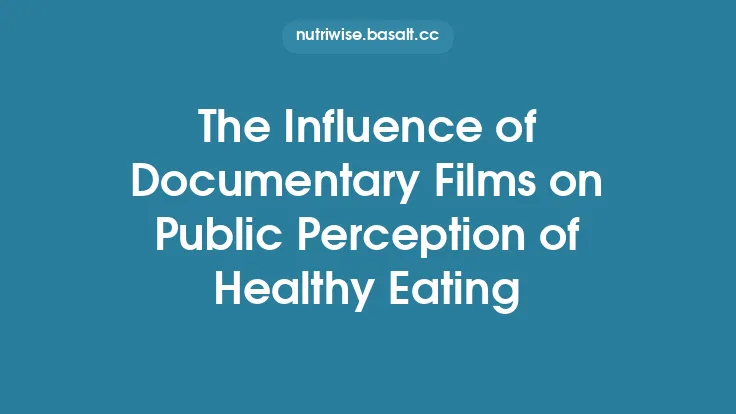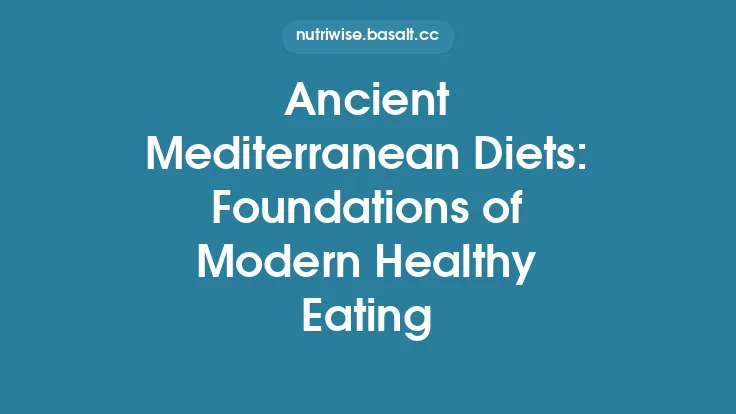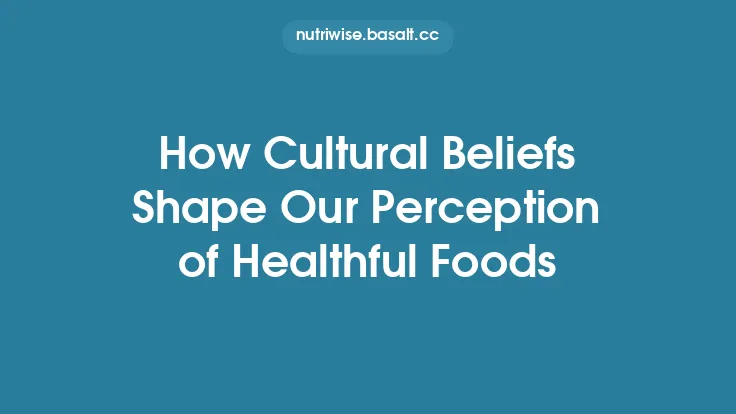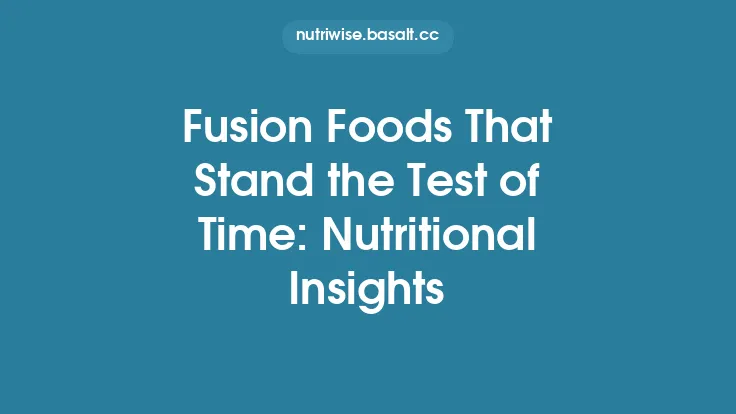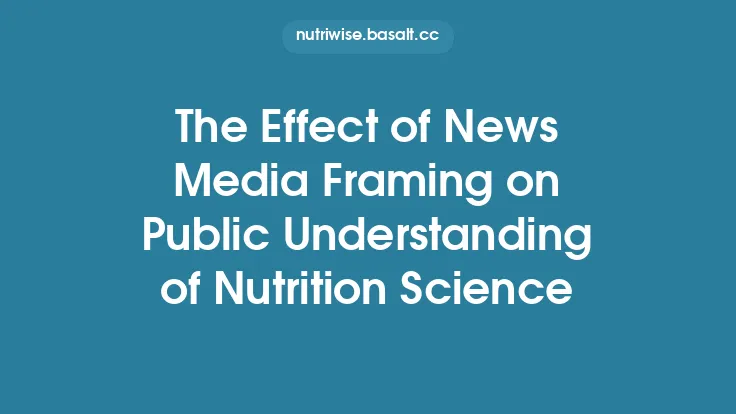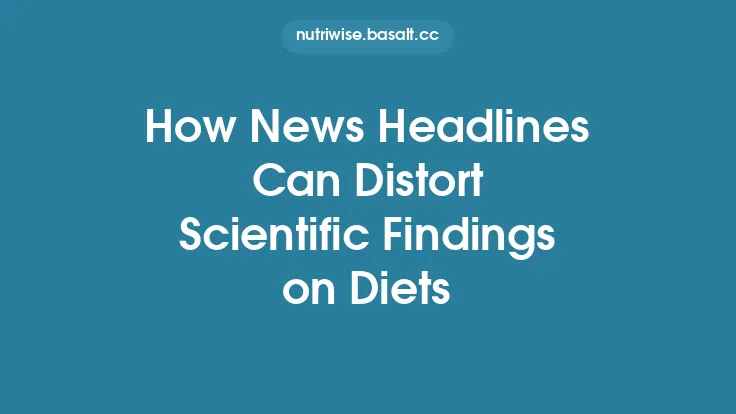New diet trends burst onto the scene with headlines promising rapid weight loss, disease reversal, or even “superhuman” energy levels. For many, the allure is immediate, but the way we evaluate—accept, reject, or cling to—these claims is rarely a purely rational process. Our brains are wired with shortcuts, or cognitive biases, that filter information, shape judgments, and ultimately skew our perception of emerging dietary regimens. Understanding these biases is essential for anyone who wants to navigate the ever‑shifting landscape of nutrition with a clear, evidence‑based lens.
Confirmation Bias: Seeing What We Want to See
Definition
Confirmation bias is the tendency to seek, interpret, and remember information that confirms pre‑existing beliefs while discounting contradictory evidence.
Why It Matters for Diets
- Selective Reading: When a new diet aligns with a personal health goal (e.g., “I want to lose belly fat”), individuals gravitate toward articles, testimonials, and social‑media posts that highlight success stories, while ignoring studies that show null or negative outcomes.
- Interpretive Flexibility: Ambiguous data—such as a modest reduction in LDL cholesterol—can be exaggerated into “miraculous heart protection” if it fits the desired narrative.
- Memory Distortion: Over time, people recall the positive outcomes more vividly than the failures, reinforcing the belief that the diet works.
Mitigation Strategies
- Active Disconfirmation: Deliberately search for high‑quality studies that challenge the diet’s claims.
- Structured Review: Use a checklist (sample size, control group, blinding, duration) to evaluate each piece of evidence uniformly.
- Peer Consultation: Discuss findings with a nutrition professional who can provide an external, less biased perspective.
Availability Heuristic: The Power of Recent and Vivid Stories
Definition
The availability heuristic leads us to judge the frequency or probability of events based on how easily examples come to mind.
Application to Diet Trends
- Viral Success Stories: A single, highly publicized transformation (e.g., a celebrity losing 30 kg on a keto‑style plan) becomes readily available in memory, inflating the perceived success rate of the diet.
- Media Saturation: Continuous coverage of a diet’s “breakthrough” research makes it feel more established than the underlying evidence warrants.
Consequences
- Overestimation of efficacy and underestimation of risk.
- Skewed risk perception, leading to premature adoption without proper medical screening.
Countermeasures
- Statistical Contextualization: Compare anecdotal claims with population‑level data.
- Temporal Buffering: Wait for a few months after a diet’s debut before forming a judgment, allowing more balanced evidence to accumulate.
Anchoring Bias: The First Piece of Information Sets the Tone
Definition
Anchoring bias occurs when an initial piece of information (the “anchor”) disproportionately influences subsequent judgments.
Diet‑Specific Manifestations
- Initial Price Point: If a diet is marketed with a high‑cost “starter kit,” later, cheaper alternatives may still be perceived as low‑value.
- Foundational Claim: The first claim—e.g., “Eat only 800 kcal per day for rapid fat loss”—becomes the reference point, making later, more moderate recommendations seem insufficient.
Impact
- Resistance to adjusting caloric intake or macronutrient ratios even when new data suggest a different optimal range.
- Difficulty in abandoning a diet once the anchor has been set, even if adverse effects emerge.
Practical Steps
- Identify the Anchor: Explicitly note the first claim you encountered.
- Re‑anchor: Introduce a new reference point based on peer‑reviewed guidelines (e.g., Dietary Guidelines for Americans).
- Iterative Re‑evaluation: Periodically reassess the diet against updated evidence, not the original anchor.
Status‑Quo Bias: Preference for the Familiar
Definition
Status‑quo bias is the inclination to prefer the current state of affairs, perceiving any change as a loss.
Relevance to New Diets
- Resistance to Adoption: Even when a new diet is scientifically superior for a specific condition (e.g., a plant‑based diet for hypertension), individuals may cling to familiar eating patterns.
- Perceived Loss: Switching to a diet that eliminates favorite foods can be framed as a loss, triggering emotional resistance.
Implications
- Slower uptake of evidence‑based dietary recommendations.
- Potential for “diet fatigue” when multiple trends compete, leading to a default back to habitual eating.
Mitigation Techniques
- Gradual Transition: Introduce incremental changes rather than a wholesale overhaul.
- Loss Framing Reversal: Emphasize gains (e.g., “adding more fiber improves gut health”) rather than what is being removed.
- Decision‑Aid Tools: Use visual planners that map current habits to new, healthier alternatives, reducing perceived disruption.
Sunk‑Cost Fallacy: “I’ve Invested Too Much to Quit”
Definition
The sunk‑cost fallacy is the tendency to continue an endeavor because of previously invested resources (time, money, effort), even when future benefits are doubtful.
Dietary Context
- Financial Investment: Purchasing expensive specialty foods, supplements, or coaching packages can lock individuals into a diet they no longer believe in.
- Time Commitment: Hours spent meal‑prepping or tracking macros may create a psychological barrier to abandoning the regimen.
Consequences
- Persistence with ineffective or harmful diets, potentially exacerbating nutritional deficiencies.
- Ignoring emerging evidence that contradicts the diet’s premise.
Strategies to Overcome
- Cost‑Benefit Re‑analysis: Separate past costs from future benefits; focus solely on prospective health outcomes.
- Exit Planning: Set predefined criteria for discontinuation (e.g., lack of improvement after 12 weeks).
- Refund Policies: When possible, choose programs with money‑back guarantees to reduce financial lock‑in.
Optimism Bias: Overestimating Positive Outcomes
Definition
Optimism bias leads individuals to believe they are less likely to experience negative events and more likely to experience positive outcomes than the average person.
Effect on Diet Adoption
- Underestimation of Side Effects: Believing “I won’t get the headaches that others report on a low‑carb diet.”
- Overestimation of Adherence: Assuming personal willpower will sustain strict regimens without realistic planning.
Health Implications
- Increased risk of nutrient deficiencies, electrolyte imbalances, or metabolic disturbances because warning signs are dismissed.
- Higher dropout rates when reality clashes with overly optimistic expectations.
Counteracting Optimism Bias
- Scenario Planning: Write down worst‑case scenarios (e.g., “What if I develop fatigue?”) and develop mitigation steps.
- Evidence‑Based Benchmarks: Compare personal expectations with documented average outcomes from clinical trials.
- Feedback Loops: Use objective metrics (blood panels, body composition) rather than subjective feelings alone.
Authority Bias: Trusting the “Expert” Unquestionably
Definition
Authority bias is the propensity to attribute greater accuracy to the opinion of an authority figure, regardless of the content’s validity.
Manifestation in Nutrition
- Celebrity Endorsements: A famous actor promoting a “detox” diet can override scientific skepticism.
- Credential Overload: Overreliance on titles (e.g., “PhD in Biochemistry”) without assessing the relevance of expertise to nutrition science.
Risks
- Adoption of diets lacking rigorous testing.
- Ignoring conflicts of interest (e.g., paid promotions, product lines).
Best Practices
- Source Evaluation Matrix: Rate sources on expertise relevance, peer‑review status, conflict‑of‑interest disclosures.
- Cross‑Verification: Seek consensus across multiple independent authorities.
- Critical Questioning: Ask, “What is the underlying evidence, and how robust is it?”
Halo Effect: One Positive Trait Overshadows the Whole
Definition
The halo effect occurs when a single positive attribute (e.g., “organic”) leads to an overall favorable impression of a product or regimen.
Dietary Examples
- “Clean Eating” Label: If a diet is marketed as “clean,” consumers may assume it is automatically healthy, even if it is calorie‑dense or nutritionally imbalanced.
- “Ancient” or “Traditional” Tag: Associating a diet with historical practices can create an aura of wisdom, masking lack of modern scientific validation.
Consequences
- Overlooking hidden pitfalls such as high saturated fat content or insufficient micronutrients.
- Misallocation of resources toward trendy foods rather than evidence‑based staples.
Mitigation
- Component Analysis: Break down the diet into macronutrient and micronutrient profiles, evaluating each independently.
- Evidence Hierarchy Awareness: Prioritize data from randomized controlled trials over marketing language.
Framing Effect: How Presentation Alters Perception
Definition
The framing effect describes how different presentations of the same information lead to different decisions.
Application to Diet Messaging
- Gain vs. Loss Frames: “Gain 5 kg of lean muscle in 8 weeks” versus “Avoid losing muscle mass by following this plan.” Both convey similar outcomes but trigger distinct motivational pathways.
- Statistical Framing: “Reduces blood pressure by 5 mmHg (10% reduction)” versus “Only a 5 mmHg drop.” The former sounds more impactful.
Impact on Decision‑Making
- Individuals may favor diets framed as “gain” even if the actual benefit is modest, while dismissing those framed as “avoid loss” despite comparable efficacy.
Practical Counter‑Strategies
- Re‑frame Personally: Translate marketing frames into neutral, data‑driven statements.
- Dual‑Frame Review: Examine both gain and loss presentations before forming an opinion.
Loss Aversion: The Fear of Giving Up
Definition
Loss aversion is the tendency to prefer avoiding losses over acquiring equivalent gains.
Diet‑Specific Dynamics
- Food Sacrifice: The perceived loss of favorite foods (e.g., bread, pasta) can outweigh the perceived health gains, leading to rejection of otherwise beneficial diets.
- Social Loss: Fear of being excluded from communal meals can deter adoption.
Behavioral Outcomes
- Preference for “flexible” diets that allow occasional indulgences, even if stricter regimens have stronger evidence for a particular health goal.
- Short‑term adherence followed by relapse when perceived losses become intolerable.
Approaches to Reduce Loss Aversion
- Substitution Strategy: Replace restricted foods with nutritionally comparable alternatives that satisfy cravings.
- Incremental Gains Highlighting: Emphasize immediate, tangible benefits (e.g., improved sleep) to offset perceived losses.
- Social Integration: Find community groups that support the diet, reducing the sense of social deprivation.
Dunning‑Kruger Effect: Overconfidence in Limited Knowledge
Definition
The Dunning‑Kruger effect describes a cognitive bias where individuals with low ability overestimate their competence, while those with high ability may underestimate theirs.
Relevance to Diet Trends
- Self‑Diagnosed Experts: People with minimal nutrition education may feel confident in critiquing scientific literature, leading to the spread of misinformation.
- Under‑confidence Among Professionals: Conversely, qualified dietitians may doubt their recommendations when faced with persuasive anecdotal evidence, leading to indecision.
Implications
- Polarization of opinions on diet efficacy.
- Difficulty in achieving consensus on best practices.
Mitigation Techniques
- Metacognitive Training: Encourage reflection on one’s own knowledge limits.
- Structured Learning Paths: Use accredited courses that provide calibrated feedback on competence.
- Peer Review Participation: Engage in forums where claims are scrutinized by multiple experts.
Practical Checklist for Navigating Cognitive Biases in New Diets
| Bias | Red Flag | Action |
|---|---|---|
| Confirmation | Only positive testimonials are sought | Actively read systematic reviews and meta‑analyses |
| Availability | Recent viral story dominates perception | Look for long‑term data across diverse populations |
| Anchoring | First claim feels “must‑have” | Re‑anchor with guideline‑based recommendations |
| Status‑quo | Reluctance to change despite evidence | Pilot small, measurable changes first |
| Sunk‑cost | Continuing because of money spent | Separate past costs from future health outcomes |
| Optimism | Expecting flawless adherence | Set realistic milestones and monitor objective metrics |
| Authority | Blind trust in celebrity endorsement | Verify credentials and conflict‑of‑interest disclosures |
| Halo | “Clean” label → assumed healthy | Deconstruct nutrient composition and calorie density |
| Framing | “Lose 5 kg fast” vs. “Maintain healthy weight” | Translate marketing language into neutral data |
| Loss aversion | Fear of giving up favorite foods | Identify satisfying substitutes and incremental gains |
| Dunning‑Kruger | Overconfidence in personal research | Seek peer‑reviewed sources and professional counsel |
Concluding Thoughts
Cognitive biases are not flaws in the sense of being pathological; they are adaptive shortcuts that have helped humans survive in environments of uncertainty. In the modern information age, however, these shortcuts can lead us astray, especially when evaluating the flood of new diet trends that promise quick fixes. By recognizing the specific biases that color our judgments—confirmation, availability, anchoring, status‑quo, sunk‑cost, optimism, authority, halo, framing, loss aversion, and Dunning‑Kruger—we equip ourselves with a mental toolkit for more balanced, evidence‑driven decision‑making.
The ultimate goal is not to eliminate bias—an impossible task—but to mitigate its impact. Applying structured critical appraisal, seeking diverse sources, and maintaining a habit of reflective questioning can transform the way we perceive and adopt dietary recommendations. In doing so, we move closer to nutrition choices that are grounded in science, aligned with personal health goals, and resilient against the ever‑changing tide of diet fads.
